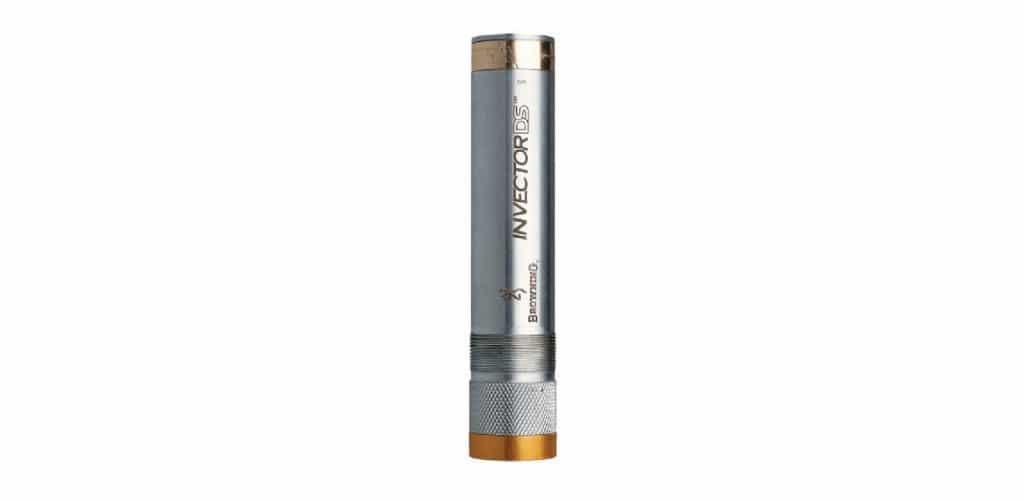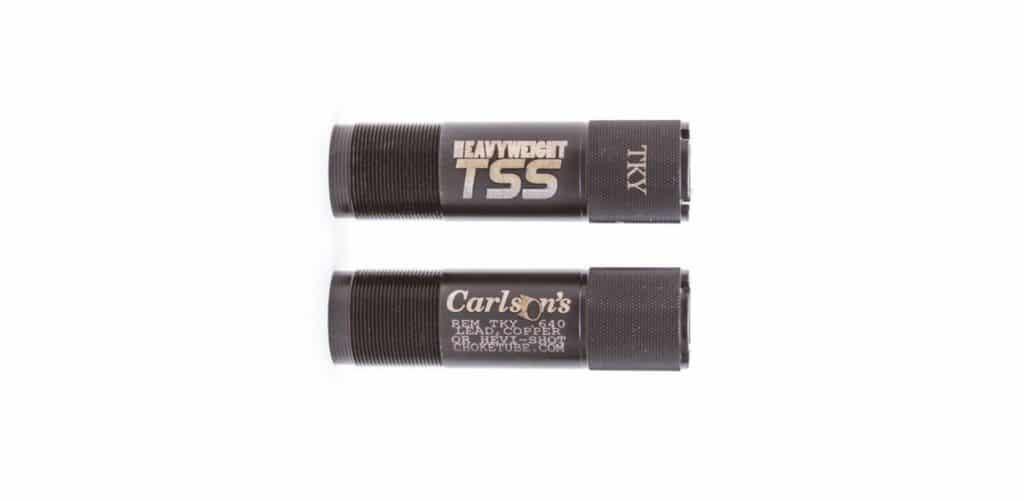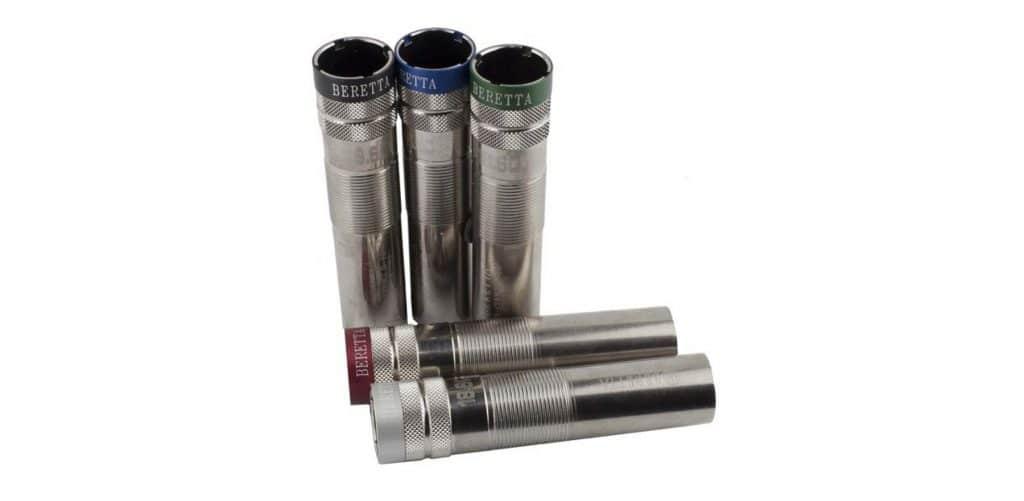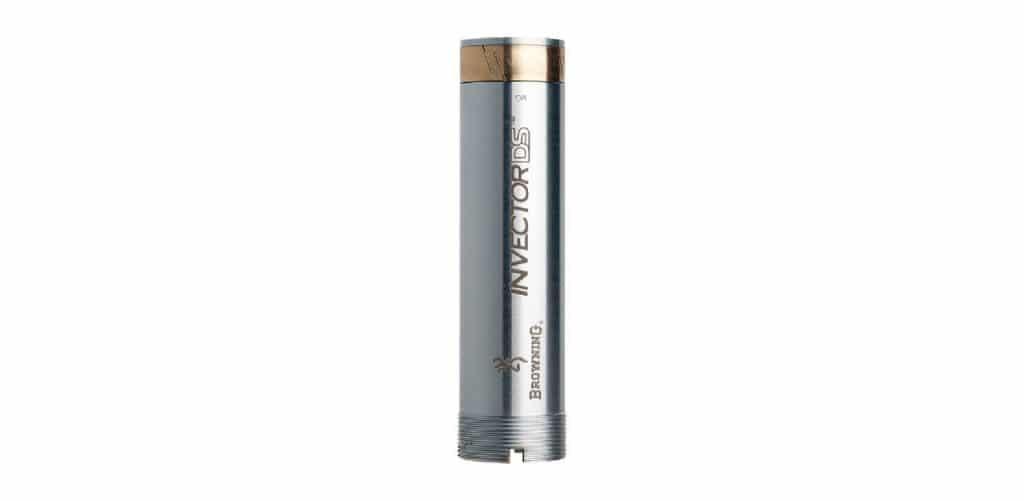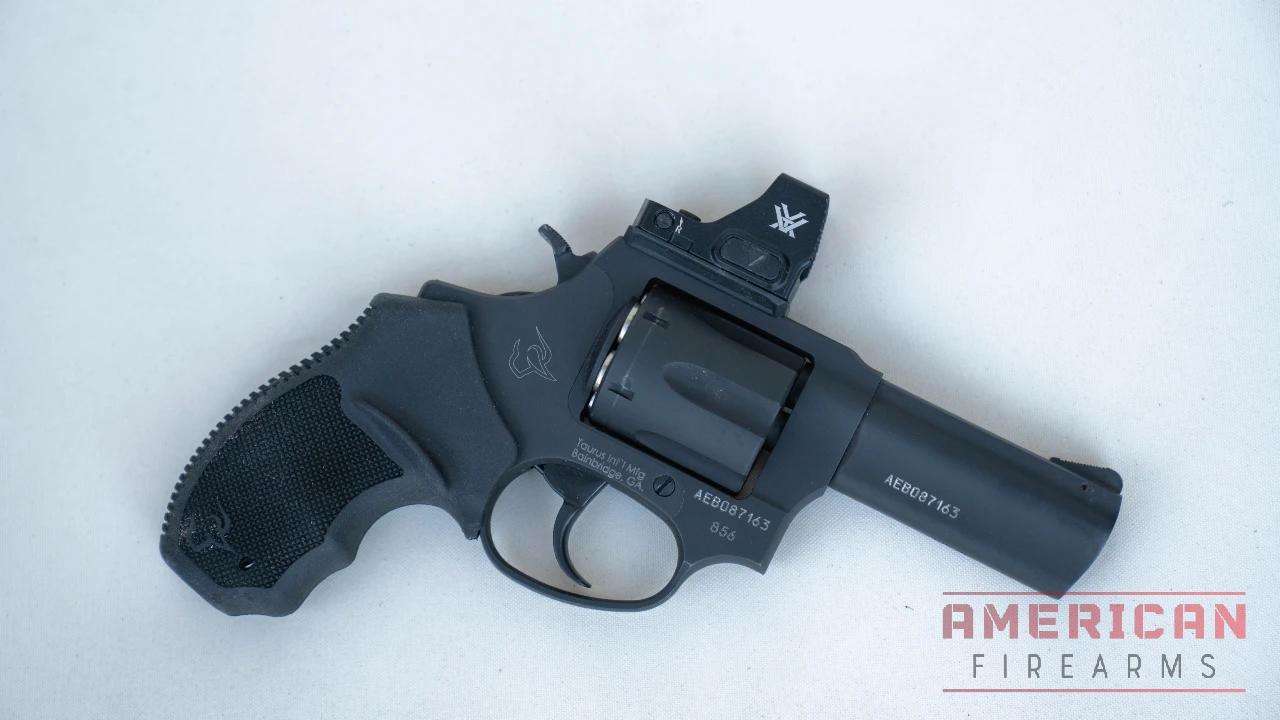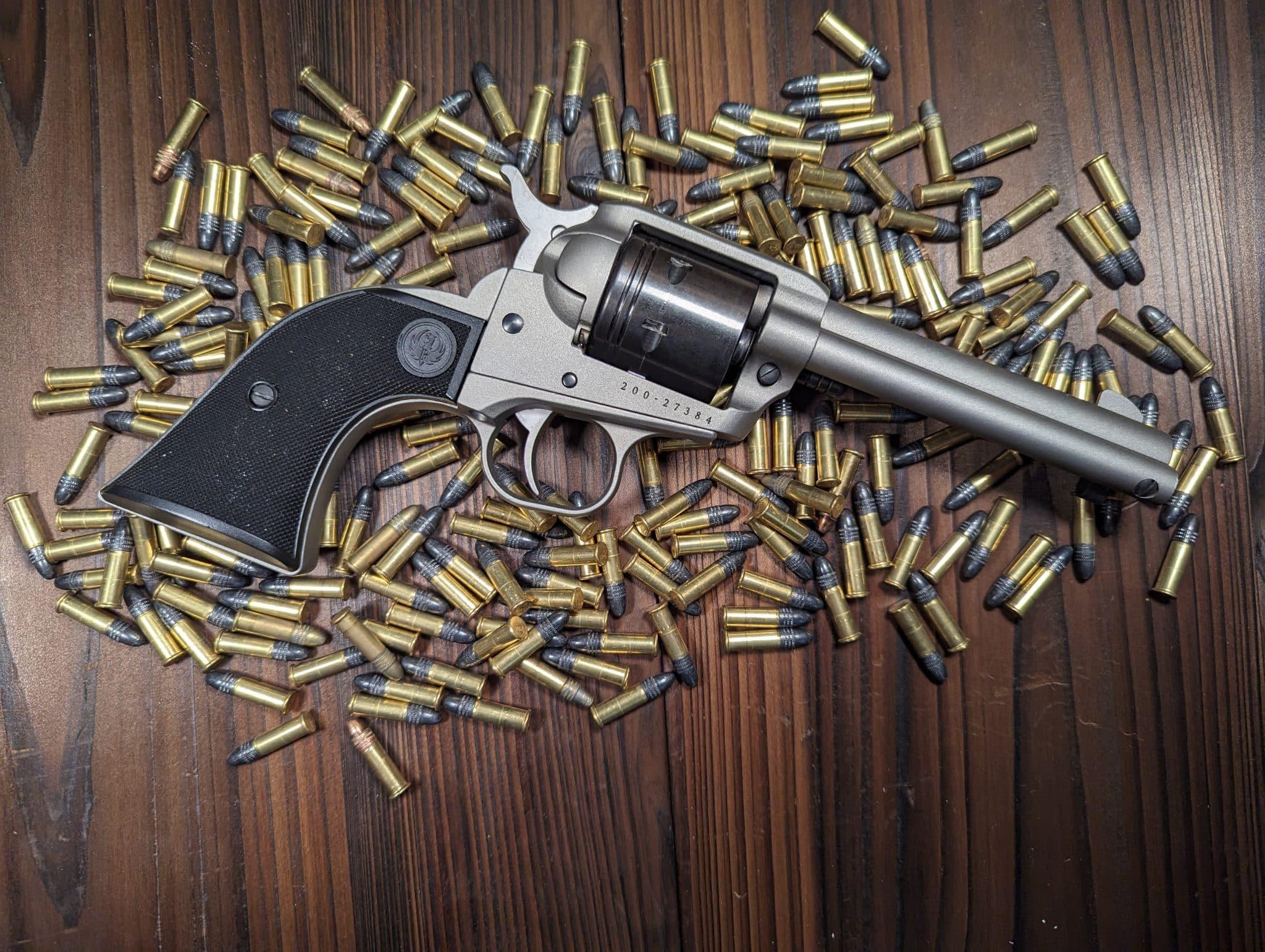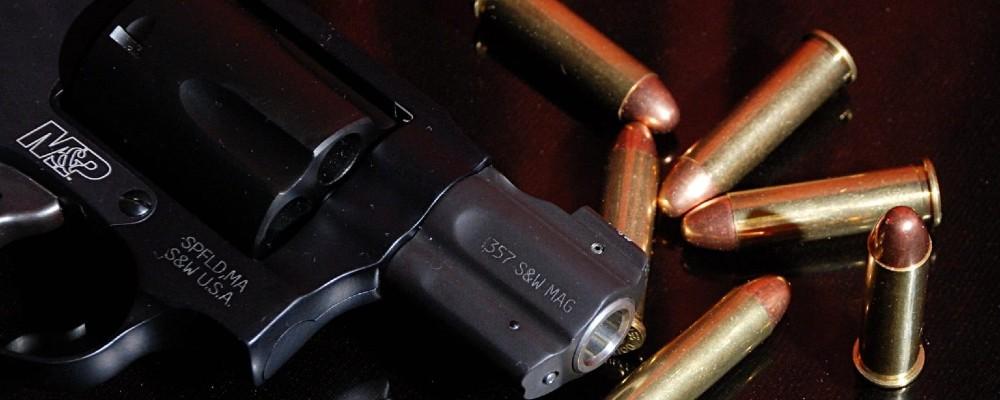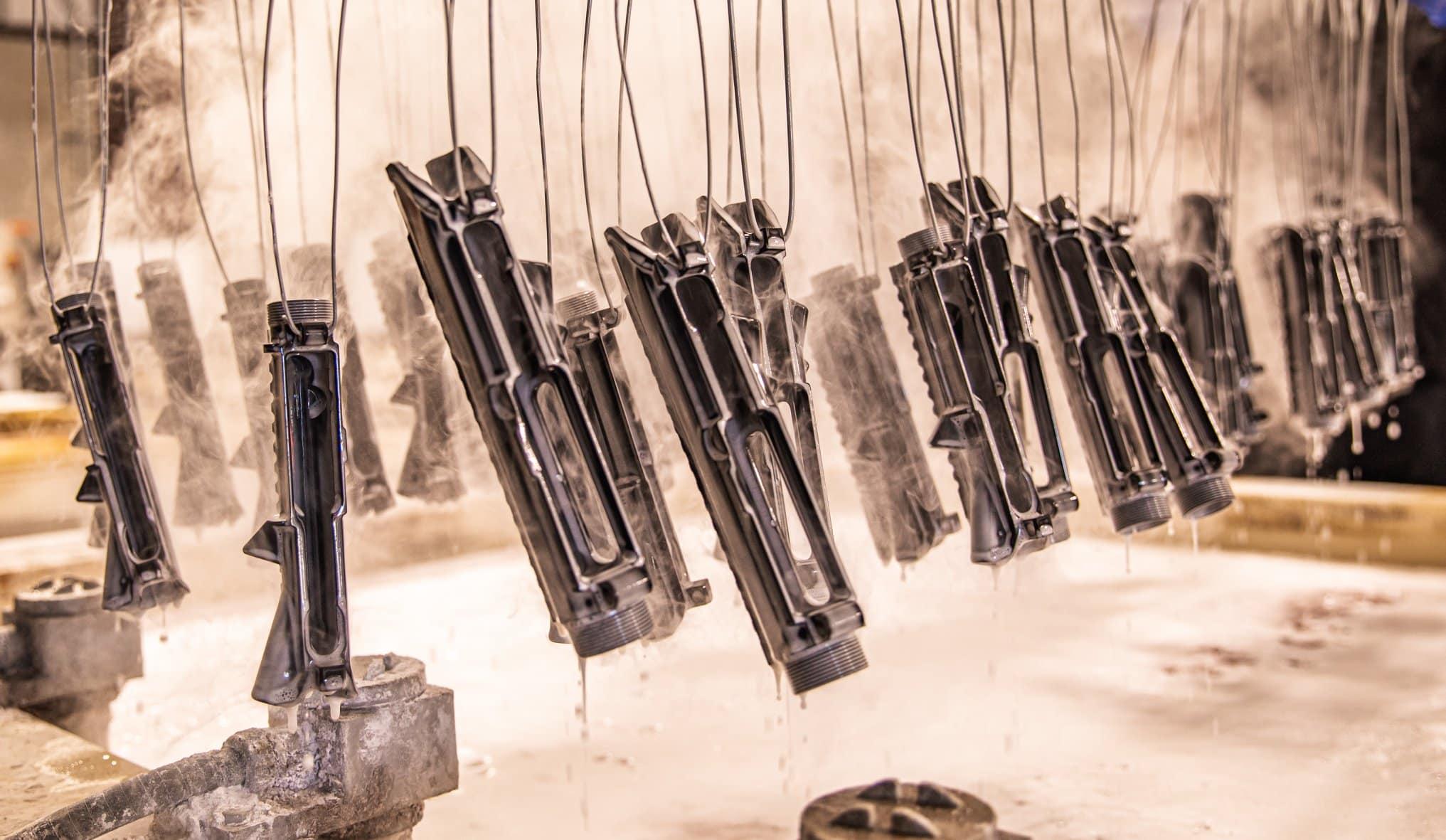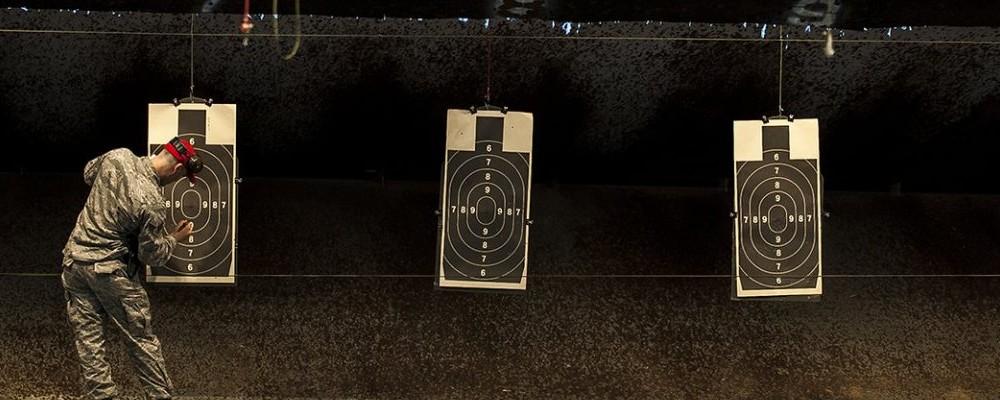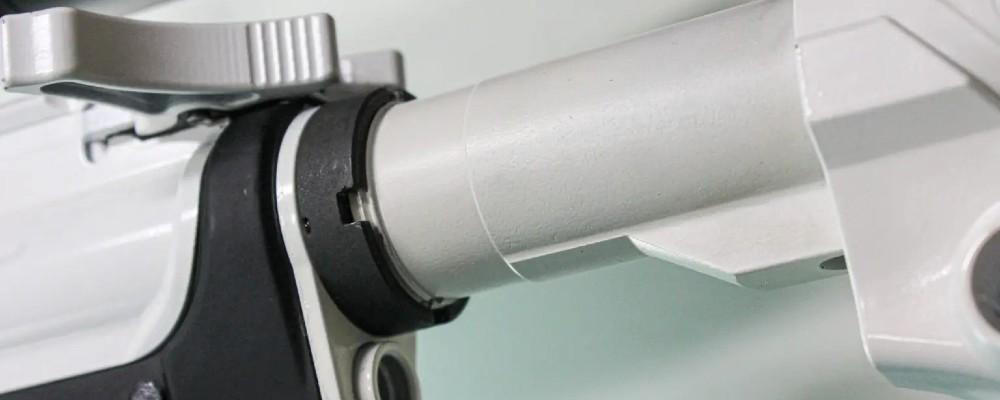A Guide to Shotgun Chokes
Written By
Patrick Long
Expert Contributor
Edited By
Michael Crites
Licensed Concealed Carry Holder
Share:
Products are selected by our editors. We may earn a commission on purchases from a link. How we select gear.

Updated
Sep 2023
Chokes are fantastic tools for modern hunting and target shooters to improve performance. If you want to shoot longer range more effectively with your shotgun, you will need a shotgun choke.
The question is, what kind of shotgun choke should you get? Well, there are plenty of choke tubes to choose from. Thankfully we will go over the different types of choke tubes so you know exactly what you are getting into.
This piece is part of our ongoing Guide to Shotgunning.
In This Article
Shotgun Choke Comparison
| Name | Selection | Price |
|---|---|---|
Best Choke for Ducks | $113 | |
Best Choke for Geese | $44.99 | |
Best Choke for Turkeys | $41.35 | |
Best Choke for Doves | $44.99 | |
Best Choke for Pheasants | $41.99 | |
Best Choke for Trap | $20.99 | |
Best Choke for Clays | $44.99 | |
Best Choke for Skeet | $29.99 | |
Best Choke for Buckshot | $21.99 |
Why listen to us?
As a hunter and recreational shooter, I have used many different chokes over the years. I know what it is like to choose between an improved cylinder and modified choke tube for your duck gun and not know which one is the best.
I have done a lot more research since those early years, and hopefully, you will not struggle as much as I did once you digest the following 5,000 words.
Shotgun Choke Reviews
1. Best Shotgun Choke for Ducks: Carlson’s
As popular as duck hunting is, you know there are thousands of arguments about which choke is best. You want a fairly tight spread so you can still hit ducks out of the air as they fly by, but at the same time, you do not want to be delivering overly tight patterns such that you’re hamstrung close up or extremely tight chokes that will constrict your pattern too much.
For this reason, a lot of hunters choose the improved cylinder for duck hunting. It gives you a 32-inch spread at 25 yards and still gives you a bit more range than an open choke. If you want to reach out a bit farther, the modified choke is what you want. This will give you a consistent spread but allows you to hit that second or third duck when the group has flown farther away.
If you don’t have any chokes for your shotgun, I suggest getting this Carlson’s Choke Tubes three-pack with an improved cylinder, modified choke, and full choke. This collection of choke tubes will give you all the tools you need to hunt just about anything, without having to pick up a new choke tube for every appplication.
If you want a modified choke tube and shoot a Beretta shotgun, the Beretta Optima-Choke HP 12 Gauge Modified 0.75″ Extended Choke Tube will give your gun barrel a small extension and keep your group tight out to at least 30 yards.
2. Best Shotgun Choke for Geese: Browning Invector-DS
Geese are big, and they can soak up a lot of pellets before they go down. Make sure your spread is not too big and you can get sufficient coverage on target. To do that, a lot of hunters choose an improved modified choke, which gives you a tighter spread at typical waterfowl distances and makes sure that you are putting a large amount of shot on your target.
Some hunters prefer to go down to a modified choke to make closer shots more effective, still other hunters go all the way to a full choke to put geese down at a distance. Your final selection depends on personal hunting style and how the geese fly around your spot.
If you use a Browning shotgun, they have a nice Browning Invector-DS 12 Gauge Improved Modified Extended Choke Tube that will give your shotgun barrel some extra length. This is a choke tube that’s long on length and even longer on performance, and I am sure you will be happy with it.
3. Best Shotgun Choke for Turkeys: Carlson’s TSS
Turkeys are going to make you take a long range shots, and using a choke will help you get multiple hits onto their small heads. To keep a dense pattern out to 40 yards, many people use a turkey choke, which is a high constriction option and generally lets you reach out quite a ways.
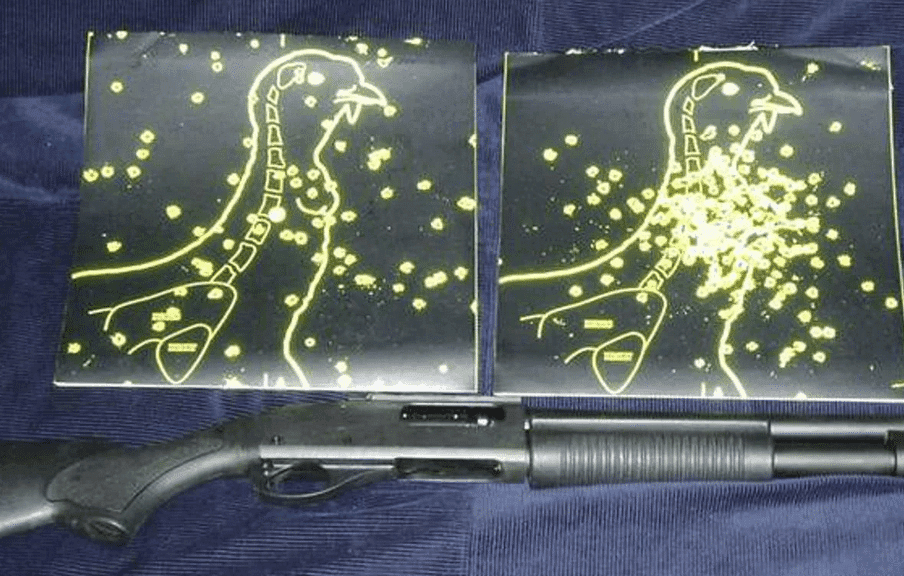
You can also hunt turkeys effectively with a full choke, but a turkey choke is a usual go-to for turkey hunting.
Carlson’s Choke Tubes TSS 12 Gauge Choke Tubes are the way to go for a turkey choke. They deliver optimum patterns and make chokes for just about every type of shotgun, although the one above is made for a Remington.
According to Carlson: “Carlson’s TSS Turkey Choke Tubes are optimized for Federal Premium Heavyweight TSS Turkey Loads but also work exceptionally well with other manufacturer’s turkey ammunition (Smaller shot size 7-9)”.
4. Best Shotgun Choke for Doves: Beretta 0.75″ Extended Choke
For dove hunting, you want a wider shot spread so a skeet or cylinder choke may be the way to go. Most of your shots will be at less than 25 yards, so you do not need that much constriction to get an adequate spread.
Plus, doves are a lot smaller than ducks or geese, so these little fast-flying guys do not need a crazy amount of pellets to make them fall.
The Beretta Optima-Choke HP 12 Gauge Skeet 0.75″ Extended Choke Tube is an excellent choice if you use a Beretta shotgun. This choke tube gives you a bit of barrel extension and makes sure that your spread will be on point when the doves start flying.
5. Best Shotgun Choke for Pheasants: Beretta Modified 2″ Extended
For hunting pheasants, you will likely want a modified choke to give you the optimal amount of pellets on target out to ranges of 30 yards.
An improved modified choke may be better if you want more distance on tap. Some hunters use a full choke to reach out, but that will limit you on the close-range shots. However, a full choke could also help you shoot through thick brushy cover, which can help when hunting close quarters upland birds.
For Beretta users, the Beretta Optima-Choke HP 12 Gauge Modified 2″ Extended Choke Tube is a choke tube that you can not look over. It gives you a bit more length with that 2-inch extension and is a quality, reliable choke.
6. Best Shotgun Choke for Trap Shooting: Beretta Full Flush Choke
Clays are moving away from you quickly in trap shooting, so you will have to make a longer shot and keep your shot diameter tight. For this reason, a full choke is commonly used in trap shooting. Trap shooting enthusiasts prefer a full choke that gives you enough constriction to have a fighting chance of hitting your target at 40 yards.
If you want a trusted name and standard flush-fit choke, the Browning Standard Invector 12 Gauge Full Flush Choke Tube is what you are looking for. This choke offers top-of-the-line performance with a durable flush fit — plus it’s affordable and straightforward. If your shotgun fits an invector size choke, this full choke from Browning is a great choice.
7. Best Shotgun Choke for Sporting Clays: Beretta 0.75″ Extended Choke
An improved cylinder choke tube is a good choice to shoot sporting clays. When you are shooting sporting clays, the clay can go in any direction, and you will be shooting them at a variable distance. It depends on where you go to shoot them, and no two locations are alike.
To give you a good amount of versatility and still constrict your spread a little, the improved cylinder choke is what many shooters go for. This choke does not constrict your spread so much that you have problems with closer targets while still narrowing it enough to be effective at range.
The Beretta Optima-Choke HP 12 Gauge Improved Cylinder 0.75″ Extended Choke Tube is a good choice for Beretta shotgun owners. This choke tube gives you a good amount of extension and is made of high-quality materials that you can count on.
8. Best Shotgun Choke for Skeet: Browning Improved Modified Extended
For skeet shooting, the best choke is — wait for it — a skeet choke. This choke applies a small amount of constriction, which means you will have a larger spread at short ranges.
This is ideal because when shooting skeet the target is flying horizontally to simulate the flight of a bird, and a wider spread means you have a better chance of hitting the moving target.
The skeet choke is preferred to open chokes because its slightly tapered constriction makes your spread just a little tighter and gives you a few more yards to play with.
For Browning shotgun users, the Browning Invector-DS 12 Gauge Skeet Flush Choke Tube is an affordable tube made of high-quality materials. Since you are not shooting an extreme distance, a flush choke tube is not a disadvantage in this situation.
9. Best Shotgun Choke for Buckshot: Browning Improved Cylinder Flush Fit
With buckshot, you are not trying to get a huge spread. You want a tight grouping that will add more effective distance, making an improved cylinder choke the best bet.
This is about as tight of a choke as you can get with buckshot before encountering problems. You can be highly effective out to 40 yards when pairing an improved cylinder with buckshot.
The Browning Invector-Plus 12 Gauge Improved Cylinder Flush Fit Choke Tube is a good choice for Browning owners. This choke is affordable and flush fit. If you are using buckshot loads in your shotgun –say for home defense — a flush-fit choke is ideal because it keeps the overall length of your firearm shorter, making it easier to maneuver in your home.
Shotgun Chokes Through The Years
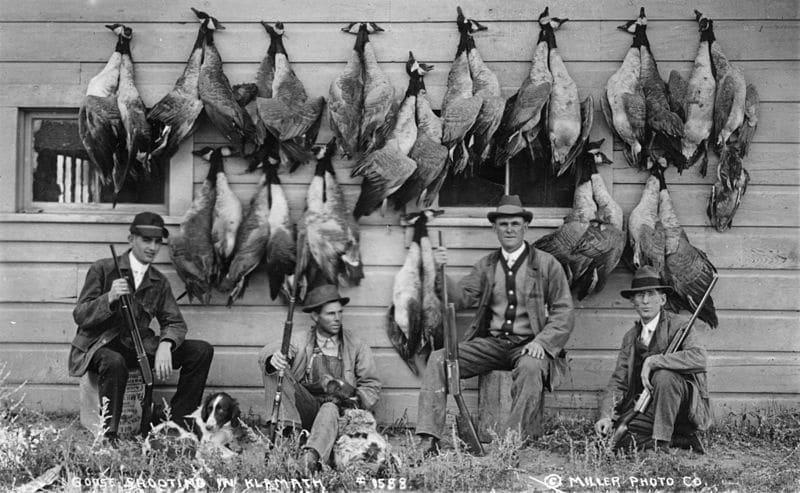
Shotgun chokes have been used for a very long time. It’s not entirely clear who the initial inventor of the shotgun choke was.
Still, the first recorded case of something like a shotgun choke being used was registered in the book “American Wildfowling” written by J. W. Long in 1827. He credits Jeremiah Smith with using the first shotgun choke tube concept in the book.
While the concept of a shotgun choke started in U.S., the choke as we know it today was perfected by W.W Greener over in the UK, who’s Greener shotgun was renown in the late 1800’s for the inclusion of choke boring.
However, the first time a shotgun choke was used on a public scale was in 1868, when gunsmith and hunter Fred Kimble used a shotgun choke to win the Illinois State Shooting Championship. Kimbles friend, Sylvester Roper, was documented applying for a patent related to shotgun chokes two years earlier in 1866.
Choked barrels ushered in a revolution in shotgunning, and through dozens of different designs and designers, and about 100 years later, Winchester started to produce the Model 59 Semi-Auto shotgun with a choke sleeve in the muzzle.
This shotgun had its share of issues and essentially served as a learning experience. In 1970 Winchester introduced the Model 1400 with the now famous ‘Winchoke,’ which improved on previous designs and gained a lot of traction with the hunting public.
These days choke design has evolved such that we manufacture chokes with precise machinery, which allows us to bring all sorts of choke tube designs to life.
There are many different types of choke designs made by various companies, and in this article, we will look at the most popular designs and their most practical applications.
Why Use a Shotgun Choke?
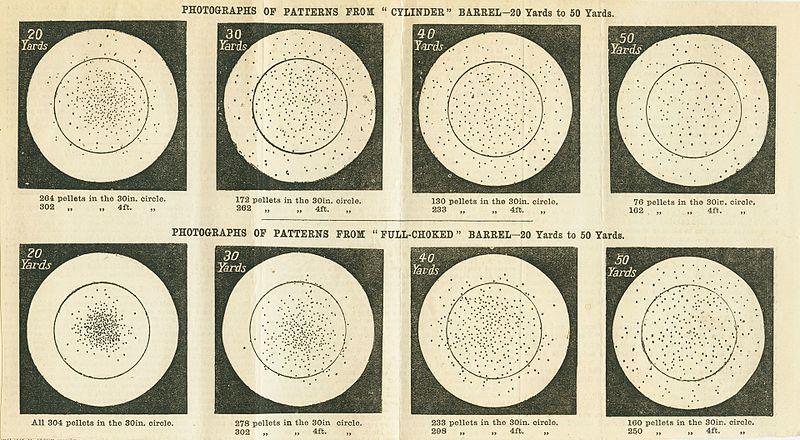
When you shoot your shotgun without a choke, the shot will spread out (also called the “shot string”) a lot more than it would with a choke.
A choke works a bit like a sprinkler — more constriction means more distance, less means a wider coverage area at the expense of distance. When your shot wad exits the end of your barrel, it has the same inner diameter as your barrel. Then it rapidly starts to spread out. You need a particular combination of a good choke with a specific load to fight against these natural forces and deliver a dense enough pattern to your target.
A choke constricts (or chokes) the end of your barrel. If you screw in or insert your choke, it acts as the final interior diameter of the end of your barrel. The choke is designed so that it gradually constricts the shot such that it exits the barrel in a tighter, smaller diameter shot wad.
Some shotguns come with a choke, but you will have to buy additional screw-in chokes if you want to change out the factory default — unless you’re dealing with a fixed choke, which machined into the barrel of the shotgun.
Thankfully most shotgun manufacturers have gone away from fixed chokes and allow interchangeable choke tubes, making the process os swapping the choke in shotgun barrels quick and easy.
The tighter shot wad produced by a choke means it will take longer for your shot to spread out, giving you a more effective shot distance.
This is the primary purpose of a choke; it lets you shoot farther with greater accuracy. The design of the choke will determine how much farther you can shoot. Generally, the tighter the constriction, the farther you can shoot.
There are also shot spreaders (also called diffusion chokes) that are designed to spread shot faster — and work opposite of traditional chokes — they spread the shot more than a cylinder bore alone, giving you very wide patterns very quickly. These are typically used for close skeet or close cover bird hunting.
Shotgun Choke Chart
While we absolutely recommend pattern-testing your particular mix of load and choke — as every shotgun patterns differently and lead patterns differently than shooting steel shot — the below shotgun choke chart will give you a sense of the relative impact different chokes have on distance and shot pattern spread.
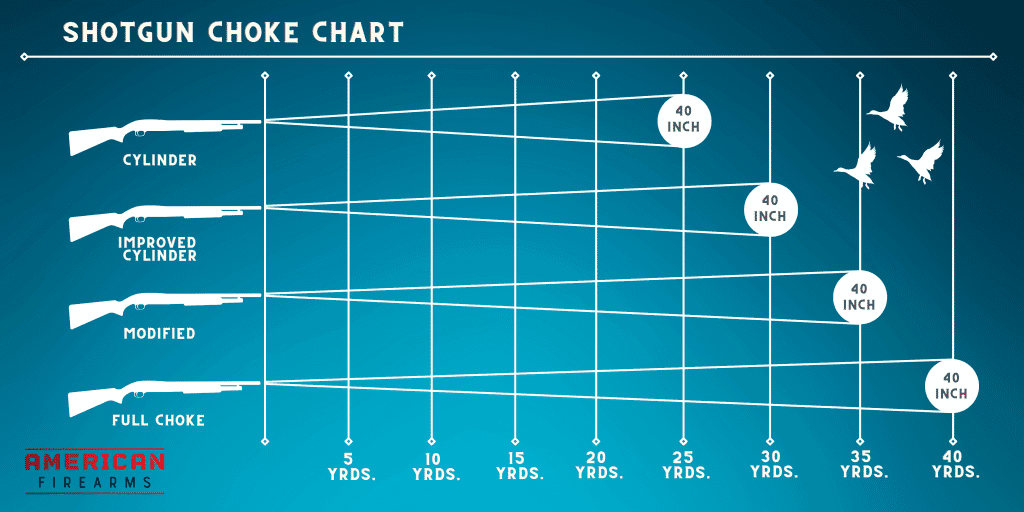
Choke Types
As I mentioned before, there are many different types of choke tubes, with the accepted conical portion constriction range from .000 to .045 thousandths of an inch under bore diameter. Of course, no one size fits all, so thankfully you have a few standard chokes to choose from.
Choke tubes help you shoot farther, but maximizing distance isn’t the goal for every shooter. Aggressive chokes have a tiny spread that can be ineffective in short-yardage compared with a less aggressive choke– especially if your target is within 20 yards.
So let’s go through the most common chokes, and then we will review the best applications for each.

Super-Full/Extra-Full Chokes
Super full chokes have a considerable amount of constriction. These choke tubes typically have a 0.04-inch tight constriction and are used for maintaining adequate pellet density within a relatively small circle at significant distance.
With a super full choke, you can shoot over 40 yards and have hundreds of pellets within a 10-inch circle, so tight you may as well be shooting out of a garden hose. These are incredibly tight chokes and should only be used for specific situations, or you may be delivering an overly tight shot pattern and risk missed shots.
Full Choke
Full chokes have a lot of constriction but less than a super full choke tube. A full choke is generally cited to allow 70% of your shot to hit a 30-inch circle at 40 yards. This type of choke can help you reach out to farther distances when shooting flying targets or when using long-range buckshot.
Modified Choke
A modified choke tube has about 0.02 inches of constriction, less than a full choke but more than improved cylinder chokes. Modified choke tubes are extremely popular for sportsmen shooting moving targets at a standard distance.
These choke tubes are cited to allow 60% of your shot to hit a 30-inch circle at 40 yards. You will generally want to use this choke tube within 35 yards, where you will have a maximum overall spread of 40 inches.
Improved Cylinder
This choke is has a slight constriction. The improved cylinder choke distributes roughly 50% of a shell’s pellets in a 30-inch diameter circle at 40 yards, which is less constrained than a modified choke — this means it spreads out a bit quicker.
With the improved cylinder, you will have a 40-inch spread at 30 yards. Hunting with this choke often involves close-quarters shots at waterfowl or upland game birds like quail, grouse, and pheasants. Rifled slugs also work well for this choke.
Skeet Chokes
Like the improved cylinder choke, the skeet choke distributes 50% of a shell’s pellets in a 30-inch diameter circle at 25 yards. They are not exactly the same but are very similar.
The difference is the pattern of the pellets on impact. The skeet choke makes an ideal pattern for skeet shooting under 25 yards.
Open/Cylinder Chokes
In the opposite extreme, an open or cylinder choke is used when not using a constricted choke. This “choke” has zero restriction and therefore won’t add gun barrel stress. About 40 percent of a shell’s total pellets will fit in a 30-inch circle at 40 yards without constriction.
You will want to keep targets close with an open choke; within 25 yards is ideal. At 25 yards, you will have a 40-inch spread with a cylinder choke.
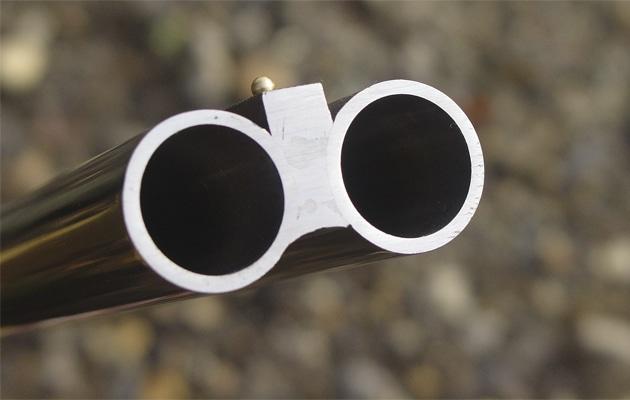
Specialty Choke Tubes
Altering a projectile while in flight is a delicate process, and it is easy to imagine how it could go wrong. The law requires steel shot instead of straight lead shot when hunting waterfowl. Steel is harder than lead, and that has to be considered when designing the choke, which means you will need a choke tube specifically designed for handling steel shot in your preferred shot size as steel shot patterns differently.
Using steel shot is better for waterfowl because it prevents lead poisoning if other waterfowl ingest the shot.
Trap shooters are also known to use specialty choke tubes and several specialized guns for various reasons. Some choke tubes can reduce barrel heating, protect the barrel, and and offer extended tubes.
Skeet shooters are always jumping at the opportunity for a competitive edge with the latest and greatest specialty choke tubes.
There are many other special cases requiring a specific design specification to, so there are dozens of specialty tubes out there for just about anything you can imagine.
Benefits
The best thing about shotgun chokes is that they allow users to fine-tune their shotgun pattern to fit their needs.
If you use the same shotgun for turkey hunting and duck hunting, you can screw in your duck choke during the fall and then swap it out for a super full choke in the spring — all while delivering consistent multiple pellet strikes with a single shotgun.
Choke tubes are also a clever way of increasing pellet concentration at a distance (making your shotgun’s effective range farther) without expanding the barrel length by a considerable amount.
Hunters had always struggled with short shotgun range, and many even resorted to using punt guns in the 1800s.
Thanks to advancements in our shotgun technology, and the adjustability of choke tubes, you can reach out as far as you need to during any hunting season by simply increassing your gun’s choke.
Essential Considerations
Desired Range
The number one thing to think about when selecting a choke is the effective range you’ll need to hit a target with the appropriate amount of pellets. The more pellets you can put on target, the more confident you can be of a clean kill.
This is why you should pay attention to how the number of pellets within a 30-inch circle at 40 yards (a statistic commonly cited by manufacturers). The more pellets in the 30-inch circle the longer it takes for the shot to expand.
As an example, if you are shooting ducks at 20 yards, you would want something closer to 50% of the pellets in a 30-inch circle at 40 yards because you will get plenty of spread at 20 yards.
With too much choke, your spread will be too small at your target distance, and it will be more challenging to hit, especially if it is flying.
Shot Compatibility
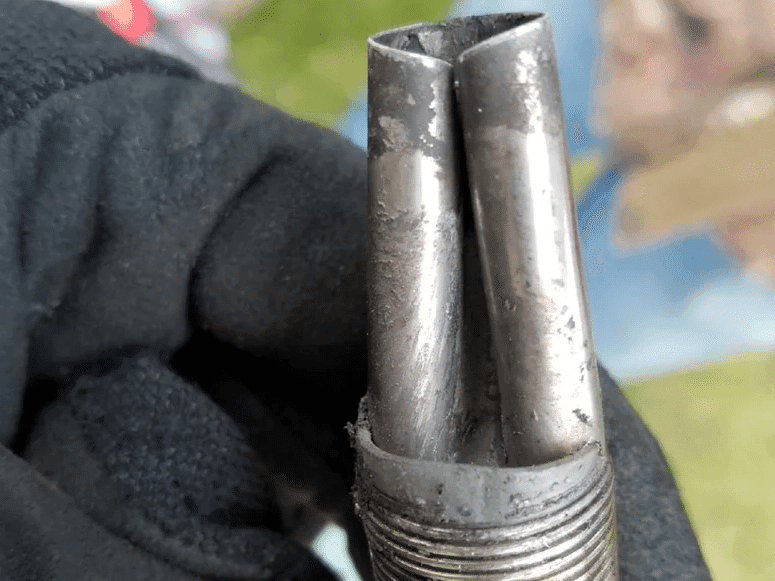
You also need to pay attention to the construction of the choke and what kind of shot it can handle. Not all chokes can handle every shotgun load. If you put an improper load through the wrong choke, it can have catastrophic consequences.
Thankfully shotgun manufacturers make this information easy to find when purchasing a choke. Most shotguns have an interchangeable choke tube system, so you can get any size you want, as long as it goes with your ammunition.
Impact of Chokes on Patterning
The conventional method for determining choke is rooted in the amount of shot that lands within a 30-inch circle at 40 yards.
Full choke produces the tightest constriction and, therefore the highest share of pellets striking within 30 inches, with each less constricted choke producing a lower and lower rate accordingly.
| Choke | Abbreviation | 30" & 40 Yard | Constriction (12GA) | Range (12GA) |
|---|---|---|---|---|
Full | F or Full | ≥70% | .035 | 45-50 Yards |
Improved Modified | IM | 65% | .028 | 40 Yards |
Modified | Mod or M | 60% | .022 | 35-40 Yards |
Light Modified | LM | 55% | .018 | 35 Yards |
Improved Cylinder | I/C | 50% | .012 | 30-35 Yards |
Skeet | Skt | 45% | .005 | 25-30 Yards |
Cylider Bore | C or Cyl | 40% | N/A | 20-25 Yards |
Based on 12-gauge firing lead shot. All figures are approximate.
Optimizing your shotgun pattern
Every single shotgun is going to pattern differently. Even two of the same model shotgun with the same choke constrictions and same load will not be the same; all guns pattern differently.
The most effective way to gather information on delivering consistent multiple pellet strikes and understand how your shotgun patterns is to start shooting patterns yourself and see how your specific firearm responds to various chokes.
Make sure you shoot at least five patterns, typically 40 yards from your pattern board or pattern plate, honing the range & choke until your pattern is dense enough to ensure multiple hits on the target. That way, you know precisely how your shotgun is firing and — most importantly — your effective range.
Adjusting pellet concentration
Another way of thinking about chokes when shotgun shooting is that whatever your desired range is, you can use tighter chokes to change the concentration of the pellets for that range — increasing shot pattern density.
You want a tight spread for turkey hunting because they don’t fly, a turkey’s head is small, and head shots are the best way to go.
If you are a waterfowl pass shooting or tracking flying targets, you will likely want a wider spread to improve your chances of hitting a duck or goose in the air.
For hunters shooting waterfowl close, you can take it a step farther and say that you may want an even bigger spread and a better chance of hitting your shot if you hunt small, fast waterfowl like green teal.
Accounting for prey, fit & style
Informed by your hunting style, location, and what you are hunting/shooting, you should be able to get a good idea of how far most of your shots should be and whether you want a large or small spread.
Then it is a matter of selecting the correct type of choke for your shotgun shooting (which you can determine from the previous sections) and shooting some paper to make sure everything is performing as expected.
If your pattern is a little off, it can be easier to change your loads or adjust your shotgun’s fit before buying a new choke. Just make sure you know what kind of loads your choke can handle.
Remember that steel shot patterns differently from lead, which you will have to account for if you use your shotgun for more than waterfowl. A different size choke will have a significant impact on your spread.
Flush-Fitting, Extended & Choke Tube Systems

As we have noted above, there are a lot of common features across chokes in terms of patterning impact and constriction, and many manufacturers use interchangeable choke tube systems; however, there is no universal design.
Individual manufacturers may even have multiple choke systems!
They all use the same 2-inch end section of a barrel’s muzzle, which is threaded to accept the corresponding chokes, but not all choke systems are the same.
Beyond the system a choke uses, there are also flush-fitting chokes — which do not extend beyond the barrel — and extended chokes, which give the user a knurled external grip that extends about an inch beyond the barrel, making them easy to change without a tool and very popular with competition shooters.
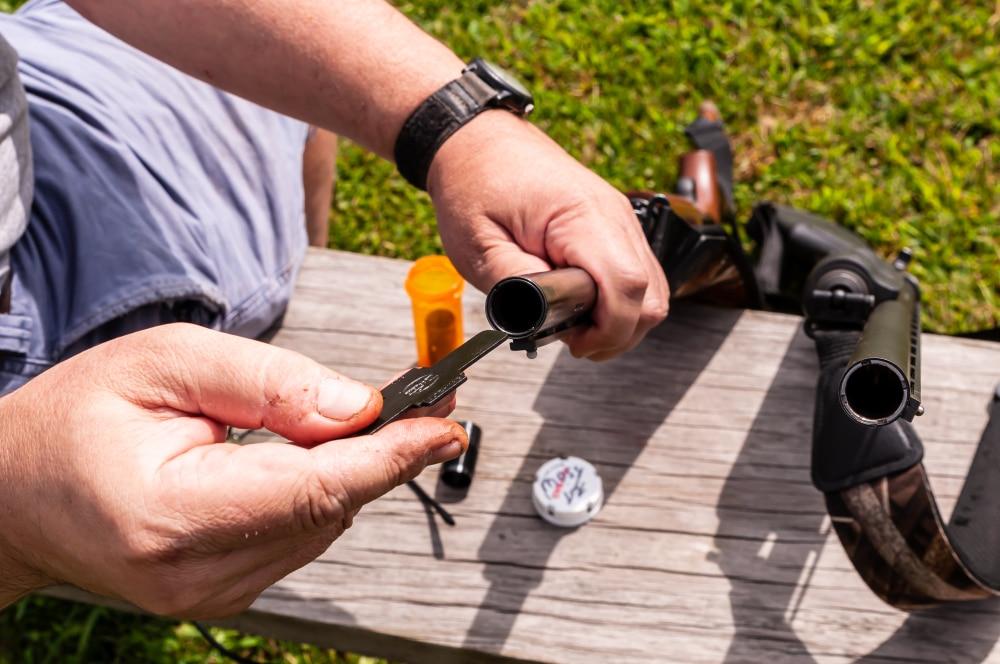
Flush-fitting chokes don’t add any length to the gun but require more effort to change. The tubes have notches in the muzzle that can be engaged for installation or removed with an included wrench.
Manufacturers will often use two marking systems; one on the tube itself to note construction and one on the lip of the choke tube, eliminating the potentially aggravating step of removing a choke tube just to inspect the constriction.
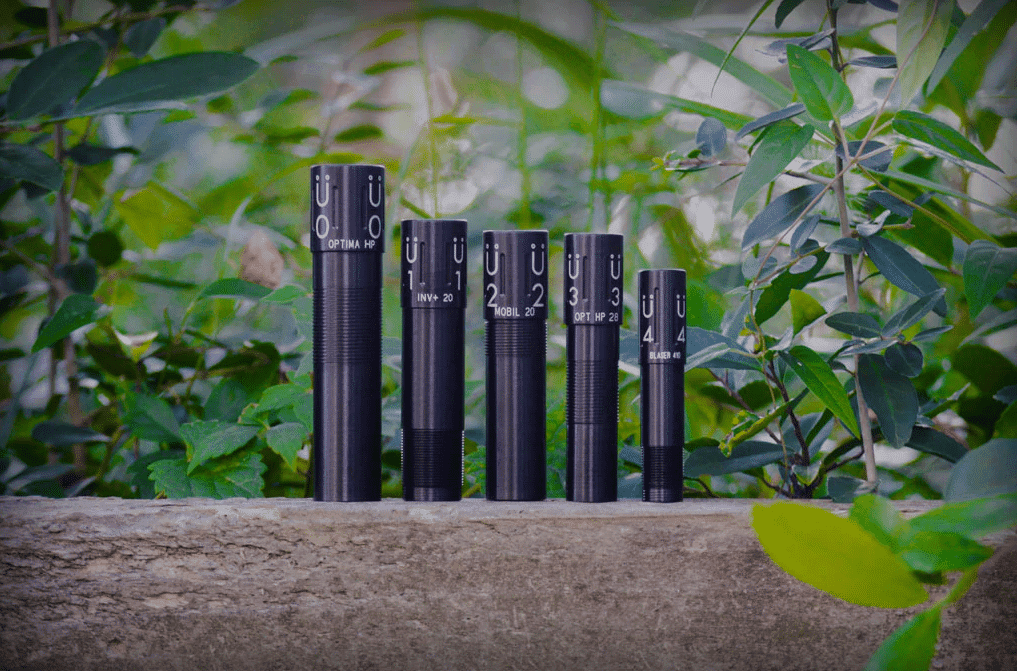
Extended chokes add about an inch to the end of your barrel, but have a few advantages if convenience is important to you.
One is that they easy to change, often including knurled or notched external surfaces for added grip. Competition shooters love them because some events, like sporting clays, involve swapping chokes based on target presentation. Competitors can manually change them by hand quickly and easily.
The extended area also makes it easy to determine the installed choke’s constriction thanks to the inscriptions on each tube. No need to stare down the muzzle of your shotgun to see if your choke has three or four notches.
The extension can also allow for more gradual choke constriction, which improves patterning.
A potential downside beyond added length is some competition models aren’t made to handle steel shot or high-velocity loads, so keep them apart from other chokes if those are in your bag.
Here are a few of the most popular systems & notes on compatibility.
- Beretta – Benelli: The Mobil choke is one of 4 Beretta and 2 Benelli systems.
- Benelli Crio+: A new, 2nd version, designed for later gun models.
- Browning Invector Plus: The 2nd generation system that is interchangeable with some newer Winchester guns.
- Mossberg – Winchester – Weatherby: Backwards compatible with 1st generation Browning Invector choked guns. Also seen on older Rugers.
- Mossberg 835 and 935: Standalone system, not interchangeable with other systems.
- Remington: Commonly known as Rem-choke, not interchangeable with newer Pro Bore chokes.
- Ruger: Older guns use Mossberg, Win and Weatherby pattern. Newer guns use a Briley choke system.
What You Get For Your Money
- $20-$40. If you want a cheap choke to get the job done, you can expect to spend around $20. There is nothing wrong with these chokes, they still do the job of a choke: constrict your shot as it exits the barrel. However, you will likely get a short choke at this price point that fits flush inside your barrel and offers no extension or porting.
- $40-$60. In the $40 price range, you’re in the choke sweet spot. You can expect to see some nicer chokes that offer some barrel constriction and extension, plus they will be made out of better quality materials and some of these chokes also offer porting. This is a fairly standard price for a middle-of-the-road or slightly more expensive shotgun choke, and it will be exactly what the average hunter needs.
- $60 & Above. In the $60 and up price range, chokes can get fancy. Most chokes in this price range will be extended chokes that add length to your barrel by a good bit, and many of them offer porting as well. These chokes will be made of the highest quality materials and will likely produce the most repeatable spreads
How We Selected Our Recommendations
We have certainly used a lot of choke tubes in our day, but not every single one on the market. We try to do as many hands-on reviews as possible, but sometimes we have to rely on other expert online reviews or customer reviews.
Nonetheless, we have handled most products listed here or talked to an expert who has. You can be confident that anything you see here will be worth your while and effective in the field.
FAQs
What Size Is a 3/4 Choke?
What Are the Notches on a Shotgun Choke?
Is a Turkey Choke a Full Choke?
What's the Best Shot for Turkey?
Can I Use a Modified Choke for Turkeys?
Will a Full Choke Work for Turkey Hunting?
What's the Best Waterfowl Choke Tube?
More Reading
- Hunters Handbook. Cover Image
- A shotgun shooters guide to interchangeable choke tubes
- Shotgun Chokes Explained – a Guide to Markings, Sizes & Patterns
- The history of Shotgun chokes
- Infographic: Trap vs. Skeet vs. Sporting Clays
- Punt gun – Wikipedia
- Briley Diffusion Chokes | Field & Stream
- Shotgun Choke and Shot String
- WW Greener – Wikipedia
Sign up for our newsletter
Get discounts from top brands and our latest reviews!





